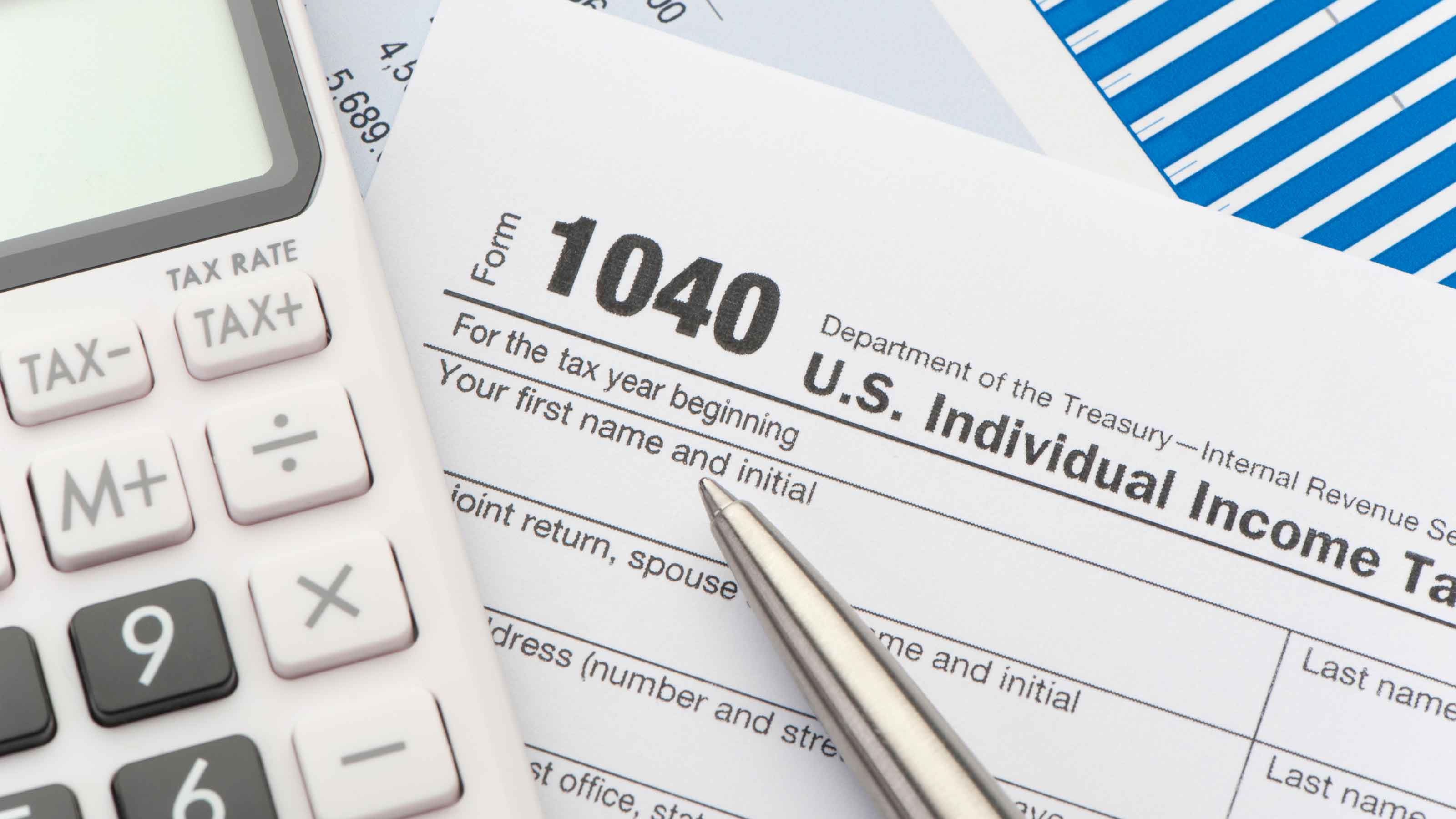Year-End Tax Moves for 2012
These year-end maneuvers will trim your tax bill no matter what Congress does.

Year-end tax planning is stressful under ordinary circumstances, and this year is anything but ordinary. Unless Congress reaches an agreement by December 31, tax rates on wages and investments will rise, the exemption from the estate tax will shrink, and dozens of tax breaks will disappear. Without a compromise, nearly 90% of Americans will pay higher taxes next year, and the average household's tax bill will increase by $3,500, according to an analysis by the Tax Policy Center.
SEE OUR SLIDE SHOW: 12 Year-End Tax Moves.
The most likely fix is a temporary extension of the current tax rates, but the odds that a lame-duck Congress will reach a deal are fading. With that in mind, focus on year-end tactics that will trim your tax bill no matter what Congress does.

Sign up for Kiplinger’s Free E-Newsletters
Profit and prosper with the best of expert advice on investing, taxes, retirement, personal finance and more - straight to your e-mail.
Profit and prosper with the best of expert advice - straight to your e-mail.
Convert a traditional IRA to a Roth.
If you think your tax rate is going to rise sometime in the future, converting to a Roth makes a lot of sense. Withdrawals from traditional IRAs are taxed at your ordinary income tax rate, while all withdrawals from Roths are tax-free and penalty-free as long as you're at least 59 ½ and the converted account has been open at least five years. You do have to pay taxes on any pre-tax contributions and earnings in your traditional IRA for the year you convert. That's why converting before New Year's Eve is smart: You'll pay taxes at current tax rates, which are unlikely to go any lower.
If you're an upper-income taxpayer -- with modified adjusted gross income(AGI) of at least $200,000 if you're single or $250,000 if you're married filing jointly -- you have an even greater incentive to convert in 2012, because converting next year could trigger a new 3.8% surtax on unearned income. (The surtax was enacted to pay for some of the costs of the health-care reform law.) Withdrawals from an IRA aren't subject to the surtax, but they're counted as adjusted gross income and could lift your AGI above the threshold.
There is a major caveat, though. We think a major tax reform package could be enacted as early as next year that would lower overall tax rates, while eliminating tax credits and deductions. If that happens, you'd be better off converting after December 31.
Fortunately, when you convert to a Roth, you can change your mind, says Kathy Stewart, director of fiduciary research for fi360, a training organization for financial advisers. If it looks like tax reform is going to lower your tax rate, you have until October 15, 2013, to undo the conversion and turn your Roth back into a regular IRA.
Converting to a Roth is rarely a good idea unless you have enough money outside your IRA to pay the taxes. And don't overlook any tax liabilities from previous conversions, says Greg Womack, a certified financial planner with Womack Financial Advisers, in Edmond, Okla. In 2010, Congress allowed taxpayers who converted to split the taxable income over 2011 and 2012. If you still owe taxes on a 2010 conversion, the additional income from a 2012 conversion could push you into a higher tax bracket.
[page break]Page 2 of 4
Max out on your tax-deferred retirement savings plans.
This year, you can contribute up to $17,000 to your 401(k) or other employer-based plan; if you're 50 or older you can contribute up to $22,500. This is a smart strategy if you plan to convert to a Roth this year because it will lower your taxable income. You have until April 15 to contribute up to $5,000 ($6,000 if you're 50 or older) to an IRA; contributions to traditional IRAs may be tax deductible.
Make gifts before year-end.
Barring action by Congress, the estate tax and lifetime gift tax exemption will drop to $1 million, from $5.12 million. Plus, the maximum estate tax rate will jump to 55% from 35%.
That doesn't mean you should start handing out big checks to your children and grandchildren (see Protect Your Estate From Greedy Heirs). Gifts must be irrevocable (otherwise, the IRS doesn't consider them gifts), so you can't ask for the money back if you come up short. But if you have more than $1 million in assets, review your estate plan before year-end, says Irvin Schorsch, president of Pennsylvania Capital Management. Talk to an estate-planning attorney about setting up trusts and other vehicles that will allow you to take advantage of the current exemption to transfer wealth to your children or grandchildren, tax-free. You could also take advantage of this exclusion to forgive family loans that the borrowers may be unable to repay.
Even the less well-heeled should consider taking advantage of the annual $13,000 gift tax exclusion. You can give $13,000 to as many individuals as you like, tax-free; if you're married, you and your spouse can give $26,000 per recipient. This exclusion will be available next year -- and will likely rise to $14,000 -- but if you fail to take advantage of it by year-end, your 2012 exclusion disappears.
Boost your income.
Deferring discretionary income, such as year-end bonuses, is a popular tax strategy when tax rates are expected to remain the same or decline. This year, though, high-income taxpayers may want to accelerate discretionary income to avoid another tax hike created by the health-care reform law. Starting in 2013, taxpayers will pay an additional 0.9% Medicare tax on income from wages over $200,000 ($250,000 for married couples.) Of course, if tax reform leads to lower rates, deferring income would still make sense. But that may not happen right away: rate cuts in the Tax Reform Act of 1986 didn't take effect until 1987 and 1988.
Map out your itemized deductions.
If tax rates increase next year, deductions will be more valuable. That would seem to argue in favor of postponing your charitable gifts until 2013.
Much depends, though, on your personal situation. If you expect your income to drop next year -- you plan to retire, for example -- the deductions will probably be more valuable this year, no matter what happens with tax rates. Even if you think your income won't drop, Tim Steffen, director of financial planning for Robert W. Baird, advises against postponing charitable donations and other expenses if next year's tax rates remain undetermined at year-end. "Because we don't know what's going to happen, a bird in the hand is worth two in the bush," he says.
And for high earners, there's another twist. Before 2001, the tax code limited itemized deductions and personal exemptions for taxpayers whose income exceeded a certain threshold. The Bush tax cuts phased out those limits and repealed them in 2010. The reductions are scheduled to be reinstated in 2013. If Congress doesn't act, high-income taxpayers could lose up to 80% of their itemized deductions. For that reason, a charitable gift made in 2012 may produce greater tax savings than one made in future years, even if tax rates increase.
You may want to pay other deductible expenses before year-end, such as your January mortgage, 2013 real estate taxes and fourth-quarter estimated state income taxes. Be careful, though: If you're a candidate for the alternative minimum tax, some of those deductions could be disallowed. Residents of states with high income taxes, such as New Jersey and California, are particularly vulnerable to the AMT.
[page break]Page 3 of 4
Postpone your required minimum distribution for as long as possible.
A tax break that allowed individuals age 70½ to make a tax-free distribution of up to $100,000 from their IRAs directly to charity expired at the end of 2011. Congress has extended this tax break several times, and may do so again for 2012. If you're interested in taking advantage of this provision, you'll need to hold off until you see what Congress does, Steffen says. If you take a taxable distribution from your IRA, you can't put it back and ask your custodian to make a direct contribution to charity.
If you don't need money from your IRA for income, it's generally a good idea to delay taking your RMD anyway, because that gives your investments more time to grow tax-deferred. Just don't wait past mid December to give instructions to your IRA custodian. Failure to take a required RMD by year-end will trigger a penalty equal to 50% of the amount you were supposed to withdraw.
Review your portfolio.
Allowing taxes to dictate your investment strategy is rarely a good idea . But if you're already considering selling appreciated securities or other assets -- even if you don't have losses to offset them -- cutting them loose by year-end could save you money (you can harvest losses to offset investment gains, plus shield up to $3,000 of ordinary income from taxes).
Unless Congress extends the Bush tax cuts, the top rate on capital gains will rise to 20%, and the top rate for dividends will jump to 39.6%. Even if Congress extends current rates, the new 3.8% surtax on unearned income will boost the top rate for long-term capital gains and dividends to 18.8%.
If you think you're going to need to sell some of your investments to raise cash next year, do it before December 31, Steffen says. "Nobody expects capital gains rates next year to be lower than they are now."
But don't get carried away, Steffen adds. "If it's still a good quality investment, you should probably hang on to it," he says. "Capital gains rates change all the time. Who knows what they'll be when you do want to sell it."
If you're an investor in the two lowest income tax brackets, 2012 is the last year you will pay zero tax on capital gains and dividends. That could be a boon to retirees, who have a higher standard deduction than younger taxpayers and who are not taxed on some or all of their Social Security benefits, and the unemployed, who may have had to tap their investments to make ends meet.
To take advantage of the 0% capital-gains rate for 2012, your taxable income can't exceed $35,350 if you are single; $47,350 if you are a single head of household with dependents; or $70,700 if you are married filing jointly. Note that this is taxable income. That's what's left after you subtract personal exemptions -- worth $3,800 each in 2012 for you, your spouse and your dependents -- and your itemized deductions or standard deduction from your adjusted gross income.
[page break]Page 4 of 4
Get a Bigger Break for a Vehicle Donation
The ads from charities that accept donations of used cars make it sound simple. The charity picks up the vehicle and you get a big tax deduction. Everybody wins.
But depending on what happens to the car after it leaves your driveway, you could receive a much smaller deduction than some of those ads imply. In 2005, the IRS tightened the rules governing donations of used cars. The change came in response to reports that many people were overestimating the value of junkers donated to charity, costing taxpayers millions of dollars in inflated deductions.In most cases, your deduction is limited to the amount the charity receives for the sale of the car, says Bob Meighan, vice president of TurboTax. So if the charity sells it for $1,000, your deduction is limited to $1,000.
But there are two exceptions to this rule: First, if the charity sells your vehicle for $500 or less, you can deduct $500 or your vehicle's fair market value, whichever is less. For example, if your vehicle is valued at $650 and the charity sells it for $350, you can deduct $500. The other exception: If the charity uses the car as part of its charitable mission, you can deduct the full fair market value -- check Kelley Blue Book (kbb.com). You can deduct the full fair market value if the charity repairs donated cars and gives them to needy families. Similarly, you can deduct the full fair market value if the charity uses donated cars for specific tasks, such as delivering meals to seniors.
Only a handful of charities use donated cars, and they're more particular about the cars they'll accept. Still, it's worth seeking them out, and not just because you'll get a bigger tax deduction. Many charities contract with third parties to sell donated cars and receive only a fraction of the proceeds.
Because of previous abuses, donations of used cars and other noncash items may attract extra scrutiny from the IRS. So keep scrupulous records. Get a written acknowledgement from the charity showing your name and taxpayer identification number, the vehicle identification number, and the date of the contribution. If your deduction exceeds $500 and the vehicle was resold by the charity, you'll need a written acknowledgement from the charity showing the proceeds of the sale.
If you give to a charity that doesn't sell donated vehicles (or resells them to needy individuals for significantly less than the fair market value), ask for a statement from the charity certifying that the vehicle will be used as part of its mission.
This article first appeared in Kiplinger's Personal Finance magazine. For more help with your personal finances and investments, please subscribe to the magazine. It might be the best investment you ever make.
Get Kiplinger Today newsletter — free
Profit and prosper with the best of Kiplinger's advice on investing, taxes, retirement, personal finance and much more. Delivered daily. Enter your email in the box and click Sign Me Up.

Block joined Kiplinger in June 2012 from USA Today, where she was a reporter and personal finance columnist for more than 15 years. Prior to that, she worked for the Akron Beacon-Journal and Dow Jones Newswires. In 1993, she was a Knight-Bagehot fellow in economics and business journalism at the Columbia University Graduate School of Journalism. She has a BA in communications from Bethany College in Bethany, W.Va.
-
 12 Investments No Retiree Should Make
12 Investments No Retiree Should MakeIn retirement, when it's wise to take fewer risks with your nest egg, some investments are just nuts.
By David Rodeck
-
 What the Capital One Discover Merger Means for Your Wallet
What the Capital One Discover Merger Means for Your WalletThe Capital One Discover merger reshapes the credit card landscape and could impact your credit card rewards, interest rates and card perks.
By Paige Cerulli
-
 Kiplinger's Tax Map for Middle-Class Families: About Our Methodology
Kiplinger's Tax Map for Middle-Class Families: About Our Methodologystate tax The research behind our judgments.
By David Muhlbaum
-
 Retirees, Make These Midyear Moves to Cut Next Year's Tax Bill
Retirees, Make These Midyear Moves to Cut Next Year's Tax BillTax Breaks Save money next April by making these six hot-as-July tax moves.
By Rocky Mengle
-
 Estimated Payments or Withholding in Retirement? Here's Some Guidance
Estimated Payments or Withholding in Retirement? Here's Some GuidanceBudgeting You generally must pay taxes throughout the year on your retirement income. But it isn't always clear whether withholding or estimated tax payments is the best way to pay.
By Rocky Mengle
-
 How to Cut Your 2021 Tax Bill
How to Cut Your 2021 Tax BillTax Breaks Our guidance could help you claim a higher refund or reduce the amount you owe.
By Sandra Block
-
 Why This Tax Filing Season Could Be Ugly
Why This Tax Filing Season Could Be UglyCoronavirus and Your Money National Taxpayer Advocate Erin M. Collins warns the agency will continue to struggle with tight budgets and backlogs. Her advice: File electronically!
By Sandra Block
-
 Con Artists Target People Who Owe The IRS Money
Con Artists Target People Who Owe The IRS MoneyScams In one scheme, thieves will offer to "help" you pay back taxes, only to leave you on the hook for expensive fees in addition to the taxes.
By Rivan V. Stinson
-
 Cash-Rich States Lower Taxes
Cash-Rich States Lower TaxesTax Breaks The economic turnaround sparked a wave of cuts in state tax rates. But some say the efforts could backfire.
By Sandra Block
-
 The Financial Effects of Losing a Spouse
The Financial Effects of Losing a SpouseFinancial Planning Even amid grief, it's important to reassess your finances. With the loss of your spouse's income, you may find yourself in a lower tax bracket or that you qualify for new deductions or credits.
By Rocky Mengle